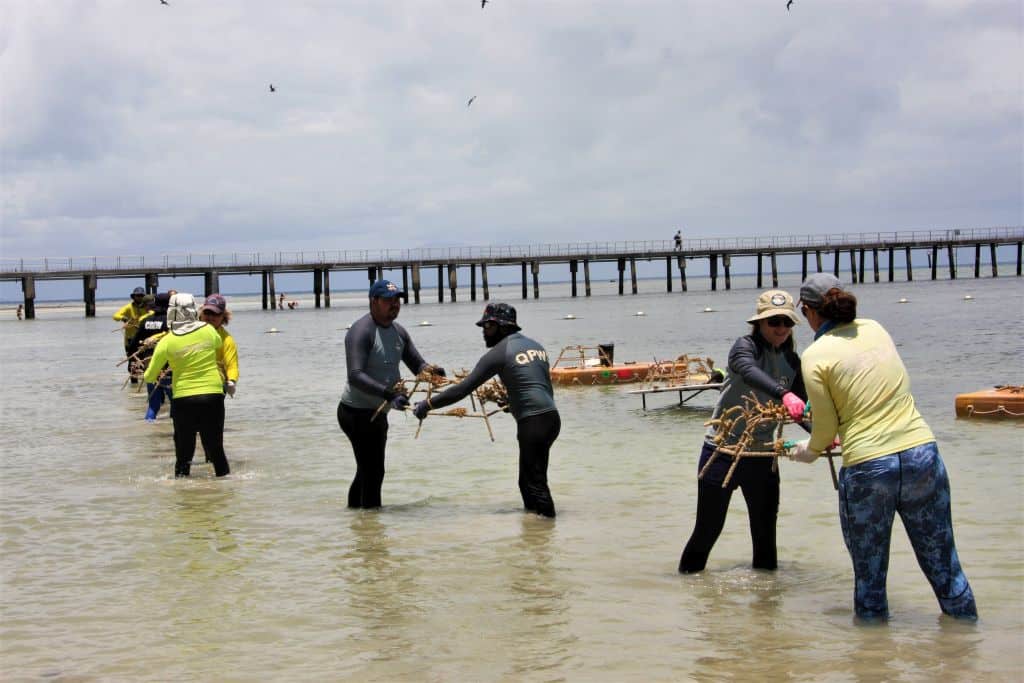An innovative reef restoration project that uses loose coral fragments to build new stable areas of live coral reef habitat kicks off this week at Green Island on the Great Barrier Reef.
It involves attaching more than 2,600 coral fragments to a web of 165 hexagonal, sand-coated frames on the seafloor and connecting additional coral fragments to suitable hard substrate using coral clips developed through the Coral Nurture Program.
Protecting important coral reef ecosystems
The live fragments will then continue to grow in their new stable location and, over the next one to three years, form a diverse and healthy area of live reef where previously there had been unstable dead coral rubble and bare limestone rock.
The trial is a collaboration between various public and private-sector stakeholders: the Great Barrier Reef Marine Park Authority, Queensland Parks and Wildlife Service, Mars Incorporated, Quicksilver Cruises and Big Cat Green Island Cruises, the Coral Nurture Program, and the Gungandji Traditional Owners.
Great Barrier Reef Marine Park Authority CEO, Josh Thomas, said the project was an exciting example of in-water actions being used to restore and protect locally important coral reef ecosystems.
Withstand pressures including climate change
“Trialling coral restoration projects on the Great Barrier Reef are critically important to building the reef’s resilience at a local level. By improving the reef’s health and resilience, it will be able to better withstand a range of pressures, including from climate change,” he said.
“This project also provides training opportunities in reef restoration for Reef Joint Field Management Program staff. If successful, this restoration technique could be more widely adopted where other local-scale impacts occur from vessel groundings, anchor damage, or cyclone impacts at locally important tourist and recreation sites or areas with specific ecological values.”
He added: “This trial demonstrates the Great Barrier Reef Marine Park Authority’s commitment to collaboration and innovation as highlighted in the Reef Blueprint for Resilience, which outlines key actions for empowering partners to help secure the future of the reef.”
Project an excellent example of collaboration
Tina Alderson, Acting Regional Director for the Queensland Parks and Wildlife Service, said detailed site monitoring would be in place at the island.
“In addition to the ecosystem benefits, this trial is an excellent example of collaboration between tourism operators, marine researchers, private corporations and Traditional Owners,” she said.
“Local tourist operators will help monitor the project with initial results expected within 12 months, and data gathered and shared with all partners involved.”












